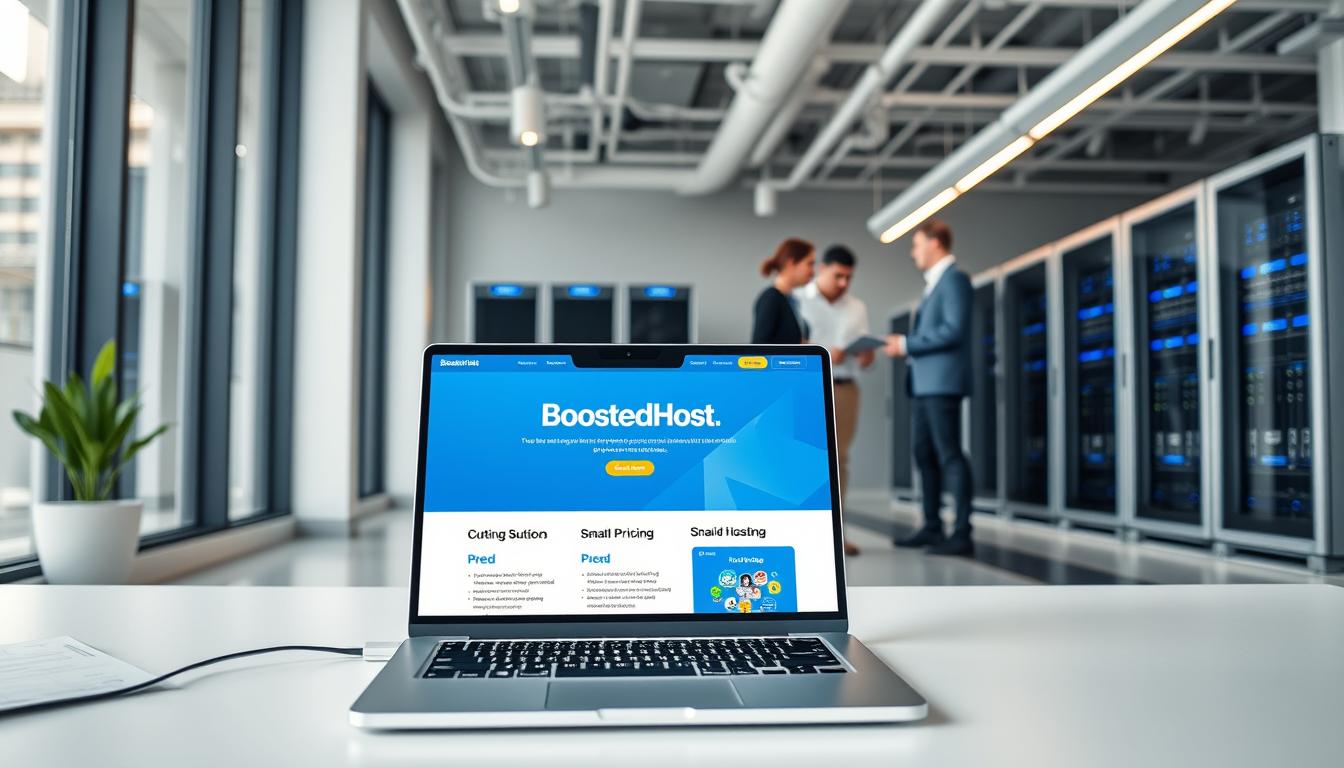We’ve all felt the sting of a slow site at the worst moment. A stalled checkout or a page that won’t load costs more than time—it costs trust. We wrote this to cut through the noise and give you a clear, honest comparison so you can pick the right web hosting for your goals.
We compare two real options—one built on a Swiss-engineered stack and one backed by a large company—to show where speed, uptime, and transparent pricing matter most. You’ll see how NVMe + LiteSpeed, developer tooling, and global data centers translate into measurable performance and better results for customers.
Our aim is simple: save you time and money. We measure features like SSL, backups, CDN, migrations, and support response so you know the true value before you commit.
Key Takeaways
- We give a data-first comparison to help you decide quickly.
- Speed and uptime affect conversions and rankings—shorter TTFB matters.
- Included features change long-term value—watch for hidden fees.
- Global servers improve results for international audiences.
- Fast, expert support prevents small issues from becoming outages.
At a glance: who these hosting companies are and why this comparison matters in 2025
We cut straight to what matters: who these hosts are and why 2025 demands different priorities.
We profile a modern, independent company launched in 2023 that was built for performance. Their stack uses NVMe, LiteSpeed, CloudLinux, and multi-location DNS. They offer transparent pricing, 24/7 expert support that resolves most issues in minutes, and an AI Website Builder called Orbit for fast site creation.

By contrast, a brand that started back 2004 now sits under a larger corporate umbrella. Its shared plans use cPanel, allow monthly billing, and include a free domain on yearly plans. The Economy plan is limited to one website and some entry plans do not include free SSL.
- Ownership matters: an independent company pushes rapid innovation and performance-first features.
- Plan basics: how many sites, SSL inclusion, and real renewal costs you’ll face in year two.
- Global reach: multiple data centers improve latency for U.S. and international audiences versus a UK-centric footprint.
We want you to see which provider’s services match your business needs—WordPress, WooCommerce, agencies, or custom stacks—so you can move quickly to the performance and pricing sections.
BoostedHost vs Heart Internet: performance, speed tests, and uptime (present)
Performance numbers tell the story before design or SEO ever do. We run real tests to show how stacks and global architecture change user experience and business metrics.

Real-world speed: LiteSpeed + NVMe against strong loading metrics
Our stack uses LiteSpeed, LSCache, and NVMe SSDs to accelerate both cached pages and dynamic requests. Reported load times regularly sit under 0.3 seconds. Daily backups and malware protection are bundled across plans.
Global TTFB and latency
Sub-200ms global TTFB means fast first-byte delivery for traffic from the U.S., Europe, and Asia. That reduces bounce rates and helps SEO.
Uptime track records and monitoring
We measure a 99.99% average uptime across multiple data centers. By contrast, Heart Internet posts solid Lighthouse metrics (TTFB ~103ms; fully loaded ~349ms) and shows 99.969% over 90 days. The difference matters when blips add up over days and week intervals.
- How LiteSpeed + LSCache on NVMe wins: faster dynamic responses with the same bandwidth and lower CPU overhead.
- Multi-center reach: Switzerland, USA, Europe, Asia reduce latency spikes during traffic surges.
- Server isolation: CloudLinux prevents noisy neighbor issues that hurt websites during peak load.
In short, Heart Internet’s raw loading numbers are competitive. But consistent global responsiveness and higher average uptime deliver better business results for most sites and web hosting use cases.
Features and security that impact your business outcomes
Small configuration choices shape big business outcomes for websites. We design every plan to remove surprise costs and reduce risk.
Core features—free SSL, daily backups, and malware scans—come on every plan. That keeps renewals predictable and your site secure from day one.
Ultra‑fast LiteSpeed + LSCache
LiteSpeed with LSCache speeds both the frontend and database queries. That improves page load and cart responsiveness for WooCommerce stores.
Developer stack and control
SSH, Git, PHP version selectors, Node.js, and Python make deployments simple. CloudLinux adds server isolation so noisy neighbors don’t hurt your sites.
- Built‑in CDN and multi‑location DNS for global delivery.
- Managed WordPress includes staging and WP‑CLI for safe updates.
- Enterprise SMTP improves email deliverability for orders and notifications.
“We include essentials on every plan so you can focus on growth, not maintenance.”
| Feature | Included | Notes |
|---|---|---|
| SSL | Free on all plans | No added cost or setup |
| Daily backups & malware | Included | Restores and scans on demand |
| Developer tools | SSH, Git, Node/Python | Supports modern workflows |
| Migrations | Free | We harden site on arrival |
Note: heart internet offers cPanel and free migrations, but SSL costs apply on lower tiers and entry plans limit site counts. Those differences change the total cost of ownership across hosting packages.
Pricing transparency and total value of hosting packages
Sticker price is one thing; total yearly cost is another. We break costs down so you see true value over a year. That matters more than flashy promos when your site grows.
No hidden fees: what’s included by default vs paid add‑ons
We list essentials up front. SSL, daily backups, malware scans, and a CDN come included. That prevents surprise bills for security and recovery.
Plan flexibility for individuals, small businesses, and agencies
Our entry plan supports 10 sites and 50GB NVMe. Mid and top tiers scale to 100 and 300 sites with developer tools and high inode limits.
That lets solo builders test and agencies host dozens without per‑site fees.
Free domain on yearly Heart plans vs consistent transparent pricing
Heart Internet offers a free domain on yearly signups, which helps first‑year costs. However, entry tiers often lack included SSL and can add ~£50/year for certificates.
We prefer clarity: no upsells for SSL, backups, malware protection, or CDN. Predictable billing beats short‑term discounts when you judge long‑term value.
| Plan | Sites | Storage | Included essentials | Typical monthly |
|---|---|---|---|---|
| Launch | 10 | 50GB NVMe | SSL, daily backups, CDN | $2.35 |
| Accelerate | 100 | 200GB NVMe | SSH/Git, remote backups | $3.45 |
| Starlight | 300 | — (high inodes) | Advanced support, daily remote backups | $7.95 |
| Heart Internet (example) | 1–200 | 100GB–200GB SSD | Free domain (yearly), SSL on higher tiers | £3.99–£14.99 |
“We compare total ownership cost over a year, factoring paid SSL, site limits, and migrations.”
Choose the package that matches growth needs. We focus on predictable value so your web costs stay under control.
Support quality, responsiveness, and migrations
Clear, technical answers from an engineer beat generic scripts every time. We staff our help desk with technicians who solve problems, not hand them off. That approach explains why most requests close in minutes.
24/7 expert support means you reach a person who can act. We keep control of our stack end-to-end to speed root-cause analysis and deliver permanent fixes. That reduces repeat tickets and downtime for your account.
Hands-on migrations and reliable email
We provide free, hands-on migrations that include performance tuning and security hardening. Your site often runs better the day it lands.
Enterprise SMTP relays push receipts, alerts, and marketing to the inbox. That improves email deliverability and protects revenue-critical messages from spam folders.
- Engineers solve issues fast—first-time resolution is our goal.
- Free migrations include tuning and hardening for immediate performance gains.
- We own the stack and do not outsource support, which preserves control and consistency.
- Heart Internet offers cPanel and free migrations; ownership history can complicate complex cases.
“You get a partner who treats your account like production — because for your business, it is.”
Which host fits your use case?
Different projects need different strengths: raw speed, developer tooling, or simple monthly plans.
Developers and agencies: performance at scale, account isolation, and tools
We recommend this provider for teams that deploy, test, and run many client websites. Accounts support 10–300 sites with SSH, Git, Node.js/Python, and WP‑CLI.
CloudLinux keeps projects isolated on the same server. Staging and high inode limits make updates safe and fast.
E‑commerce and WooCommerce: speed, reliability, and backups that protect revenue
Stores benefit from LiteSpeed + NVMe acceleration, daily backups, and enterprise SMTP for reliable order emails.
For optimized WooCommerce setups, see our WooCommerce hosting options designed to reduce checkout friction and delivery delays.
Budget and legacy needs: monthly billing, free migration, and basic hosting packages
If you want a single-site plan with monthly billing and a simple cPanel migration, the other provider covers that need well.
- Developers and agencies: performance at scale, SSH/Git, and CloudLinux isolation for stable client servers.
- WooCommerce stores: LiteSpeed + NVMe, daily backups, and improved deliverability to reduce support tickets.
- Budget projects: monthly billing, free migration, and an economy plan for single-site use.
- For campaigns with heavy bandwidth bursts, our stack sustains speed without throttling.
“We match infrastructure to your business goals — high performance for teams, simple plans for single sites.”
BoostedHost vs Heart Internet: verdict on speed, uptime, features, and pricing
Quick summary: we rate the provider that pairs LiteSpeed, NVMe, and a global CDN highest for real-world performance and predictable value.
Speed: both companies deliver fast results, but the LiteSpeed + NVMe stack with a global CDN and sub‑200ms TTFB keeps pages under 0.3s consistently. That sustained speed matters for conversions and SEO.
Uptime: 99.99% average uptime beats a 90‑day 99.969% figure. The difference reduces session drops and support tickets during peaks.
Features & price: SSL, daily backups, malware scans, and CDN are included on every plan. That transparency removes surprise costs that add up over time. The other provider still offers useful perks — monthly billing, free migrations, and a free domain on yearly plans — but entry tiers may require paid SSL add‑ons.
Tools & support: Orbit AI builder accelerates site launches. Developer tooling and server isolation future‑proof projects. Support is engineer‑first with fast resolution — a real advantage when minutes cost revenue.
“We recommend the provider that combines top performance, clear pricing, and hands‑on support for most business and agency needs.”
| Area | Leading provider | Notes |
|---|---|---|
| Performance | LiteSpeed + NVMe + CDN | Consistent speed under 0.3s across regions |
| Uptime | 99.99% | Fewer interruptions than a 99.969% 90‑day sample |
| Included features | SSL, backups, malware, CDN | No hidden fees; predictable annual cost |
| Pricing perks | Other provider | Monthly billing, free migration, free domain (yearly) |
| Support & tools | Engineer support + Orbit | Fast fixes and quick site launches |
Final verdict: For performance‑sensitive sites, agencies, and e‑commerce, choose the provider that leads on sustained speed, uptime, transparent pricing, and included features. For single‑site, monthly‑billed starters, the other company can still be a practical, low‑friction option.
Conclusion
When uptime, predictable pricing, and real speed matter, pick the stack that treats your site like revenue, not a ticket.
We recommend a Swiss‑engineered web hosting approach: NVMe + LiteSpeed, CloudLinux isolation, global DNS, and Orbit AI for fast launches. That combination delivers sub‑200ms TTFB and a 99.99% uptime target backed by 24/7 expert support.
We bundle SSL, daily backups, malware protection, and enterprise SMTP so you avoid surprise costs and broken emails. Heart Internet — founded back 2004 — still offers monthly billing and a free domain name on yearly plans, but lower tiers may add SSL fees or site limits.
Swiss‑engineered web hosting gives predictable value and performance for U.S. businesses that need reliable speed, clear plans, and quick support.
FAQ
What are the main performance differences between BoostedHost and Heart Internet in 2025?
BoostedHost focuses on a LiteSpeed stack with NVMe storage and built‑in LSCache for faster PHP and database performance. That yields lower TTFB and quicker full‑page loads globally. Heart Internet delivers solid UK‑centric speeds and reliable metrics, but BoostedHost typically beats it on worldwide latency and concurrency under load.
How does uptime compare between the two providers?
Both providers report strong uptime. BoostedHost advertises near 99.99% with multi‑region failover options. Heart Internet shows excellent UK performance with monitored 90‑day figures around 99.969%. Real‑world differences are small, but global redundancy favors the multi‑data center provider.
Are SSL, backups, and malware protection included?
BoostedHost includes free SSL, daily backups, and malware scanning across plans. Heart Internet may include SSL on higher‑tier or yearly plans, with some security features as paid add‑ons. Check plan details to avoid surprise costs.
Do either provider include a CDN by default?
BoostedHost typically bundles a global CDN on many plans for faster worldwide delivery. Heart Internet offers CDN options but often as an optional extra or limited to specific packages.
What developer tools and stacks are supported?
Both hosts support common stacks, but BoostedHost emphasizes developer features—PHP, Node.js, Python, Git, SSH access, WP‑CLI, and CloudLinux isolation. Heart Internet supports PHP and popular CMS use cases, though advanced tooling may be more limited on basic plans.
How do they handle WooCommerce and Managed WordPress?
BoostedHost provides managed WordPress features—staging, WP‑CLI, optimized PHP and caching, plus improved email deliverability for transactional messages. Heart Internet offers managed WordPress tiers and WooCommerce support, but BoostedHost is tuned for higher concurrency and cart‑heavy sites.
Which provider has clearer pricing and fewer hidden fees?
BoostedHost markets transparent pricing with many essentials included by default—no hidden SSL or backup fees on most plans. Heart Internet sometimes bundles free domains with yearly plans, but some security and extras can be charged separately.
Is a free domain name included with yearly plans?
Heart Internet often includes a free domain on eligible annual plans. BoostedHost may offer promotions or include domains on specific tiers—verify current offers when enrolling.
What migration support is available?
BoostedHost offers hands‑on free migrations for many plans, minimizing downtime and preserving SEO. Heart Internet also provides migration services, but the level of hands‑on support can vary by package and may incur fees for complex transfers.
How responsive is customer support for each company?
BoostedHost positions 24/7 expert support with fast resolution times for most issues. Heart Internet provides solid UK‑based support with standard business hours and emergency options. For immediate hands‑on help, BoostedHost typically scores higher in speed and technical depth.
Which host is better for agencies and developers?
For agencies and developers needing account isolation, staging environments, SSH/Git workflows, and performance at scale, BoostedHost generally offers a stronger toolkit. Heart Internet suits agencies focused on UK clients or simpler managed plans.
Which host is better for e‑commerce sites?
E‑commerce benefits from fast storage, caching, and reliable backups. BoostedHost’s LiteSpeed + LSCache, NVMe, and managed backups make it a strong choice for WooCommerce and high‑traffic stores. Heart Internet remains viable for smaller shops prioritizing UK customers.
Can I use monthly billing and switch plans easily?
Both providers support plan flexibility, including monthly billing on many tiers. BoostedHost emphasizes straightforward plan upgrades and scaling without hidden fees. Check each provider’s terms for prorated charges and resource limits during upgrades.
How do email deliverability and spam avoidance compare?
BoostedHost focuses on reputation management and SMTP best practices to keep transactional mail out of spam folders. Heart Internet provides standard email hosting and deliverability tools, but dedicated deliverability features may be limited to higher plans or add‑ons.
Where are the data centers located for each provider?
BoostedHost operates multiple data centers across the USA, Europe, Asia, and Switzerland to lower global latency. Heart Internet is UK‑centric with strong regional coverage. Choose based on where your audience resides for best TTFB and latency.
Are there any bandwidth or resource caps to watch for?
BoostedHost often advertises high or effectively unlimited bandwidth on suitable plans, while enforcing fair‑usage policies. Heart Internet provides clear limits per plan; higher tiers increase resource allowances. Review plan AUP and resource metrics before committing.
What SLAs and uptime guarantees are offered?
Both providers publish uptime commitments—BoostedHost typically offers a 99.99% SLA with credits for downtime. Heart Internet’s guarantees are competitive, reflecting its monitored 90‑day uptime. Read SLA fine print for credit thresholds and exclusion clauses.
How do I choose between them for a small business website?
If global speed, built‑in security, and transparent pricing matter, choose the provider with optimized stacks and included tools. If your audience is UK‑focused and you want bundled domain promotions, Heart Internet can be cost‑effective. Match features to traffic, budget, and technical needs.
Where can I see independent speed tests and uptime reports?
Look for third‑party monitoring services and independent speed test results from real‑user monitoring (RUM) and synthetic benchmarks. These give a clearer picture than marketing claims. Check recent reports for TTFB, load time, and 90‑day uptime figures before deciding.




